The Pairing of Food and Green Tea, A Gateway to Japanese Cuisine
The freshness and natural flavors of green tea complement pastries as well as vegetables, fish, and even meat.
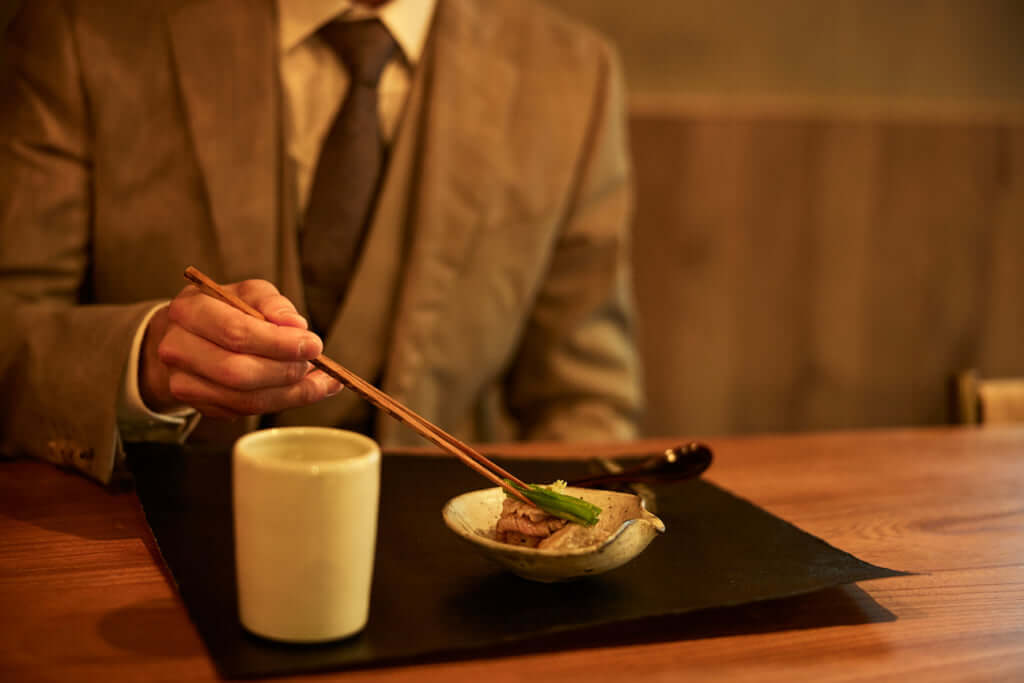
There’s a famous scene in the James Bond movie From Russia with Love: Bond is on the Orient Express, taking a stolen Russian decoding machine and a beautiful female Russian spy back to London. He is accompanied by Grant, supposedly another British agent. When the three of them have dinner in the dining car, Grant orders red wine with his grilled sole. Later, when Grant is revealed as a Soviet agent, Bond’s withering comment is: ‘Red wine with fish. That should have told me something.’
Grant had broken the most basic rule of food and wine pairing: you are meant to have white wine with fish, and red wine with meat—everyone knows that. In fact, these sorts of broad-brush rules are only a starting point for the serious sommelier, whose aim is to pair just the right wine with just the right food to achieve what the French call a mariage, a heaven-made combination that unlocks a whole new taste experience. ‘In a mariage, one plus one doesn’t equal two, it becomes three. That’s what real pairing should be about,’ explains Per Oscar Brekell, one of Japan’s few foreign-born green tea instructors.
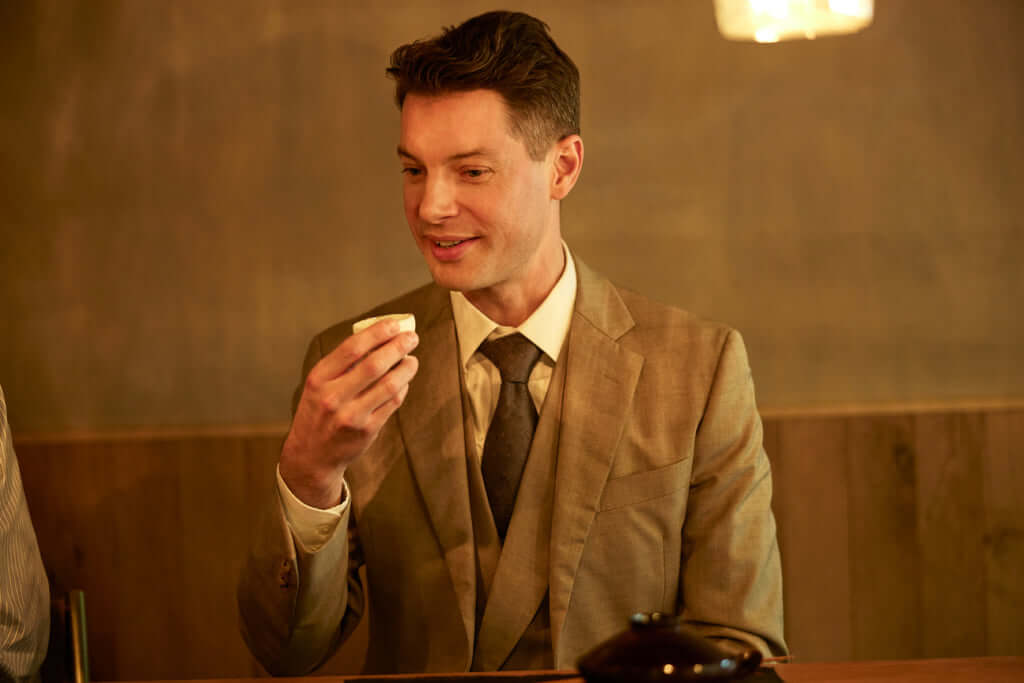
Tea instructor Per Oscar Brekell at Ryoriya-Koryoriya in Nakameguro.
A Japanese green tea rich in ‘umami’
But what is a tea instructor doing discussing wine pairing? The answer is that complex pairing is starting to take off in the world of Japanese green tea, and I am lucky enough to have the dapper young Brekell to guide me through it.
Brekell starts with a quick primer. For him, Japanese tea encapsulates the whole of Japanese food culture, which is all about natural freshness and flavour. In contrast to black tea, which has its flavour altered through oxidisation, Japanese tea leaves are steamed right after picking, a process which locks in all the natural flavours exactly as they are.
‘In addition to this freshness, Japanese tea has umami and shibumi or astringency. That gives you many of the taste elements unique to Japanese food culture in a single beverage,’ Brekell says.
In other words, if you want to get to know all about Japanese cuisine, Japanese green tea paired with food is the ideal gateway.
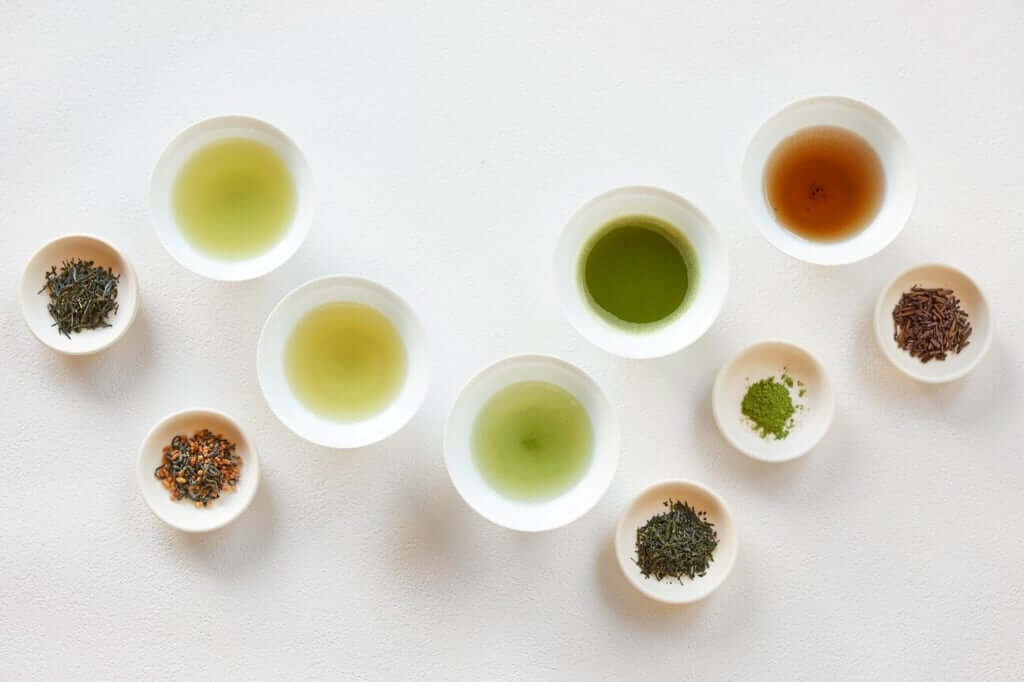
From left: ‘Sencha’, ‘Genmaicha’, ‘Gyokuro’, ‘Matcha’ and ‘Hojicha’.
Matcha, a powdered green tea with a striking dark green hue, is the best-known Japanese tea internationally courtesy of the smoothies, lattes and other concoctions purveyed by the big coffee house chains. But there are four other major types of Japanese tea, all leaf teas: There’s easy-drinking Sencha, the most popular tea in Japan; Gyokuro, a ‘shaded’ green tea that has a strong taste and plenty of umami; Hojicha, a roasted green tea; and finally, Genmaicha, where roasted rice grains are mixed in with the tea leaves.
So how does one even start pairing food with these five teas? The classic and most familiar pairing is Matcha with Japanese bean-paste sweets. Brekell describes this as ‘the best combination ever,’ thanks to it having evolved over hundreds of years in the Japanese tea ceremony.
But there is no need to be constrained by tradition. In the workshops Brekell conducts, he encourages people to try Japanese tea with different things. ‘Japanese tea goes well with Japanese food, that goes without saying. But it can go well with other cuisines as well. I encourage people to experiment,’ he says.
And experiment is exactly what Brekell and I are going to do. We are meeting in Ryoriya-Koryoriya, a small Japanese restaurant near Tokyo’s fashionable Nakameguro district, where we are about to enjoy a 5-course pairing of Japanese green tea with Japanese dishes.
The proprietor, Chinatsu Nagamine, developed her knowledge of pairing while running a wine bar. ‘The whole concept of pairing is very well established in the wine world, but when Covid-19 came along, people started going out less and drinking less. That’s when I had the idea of pairing Japanese green tea with food like this,’ she explains.
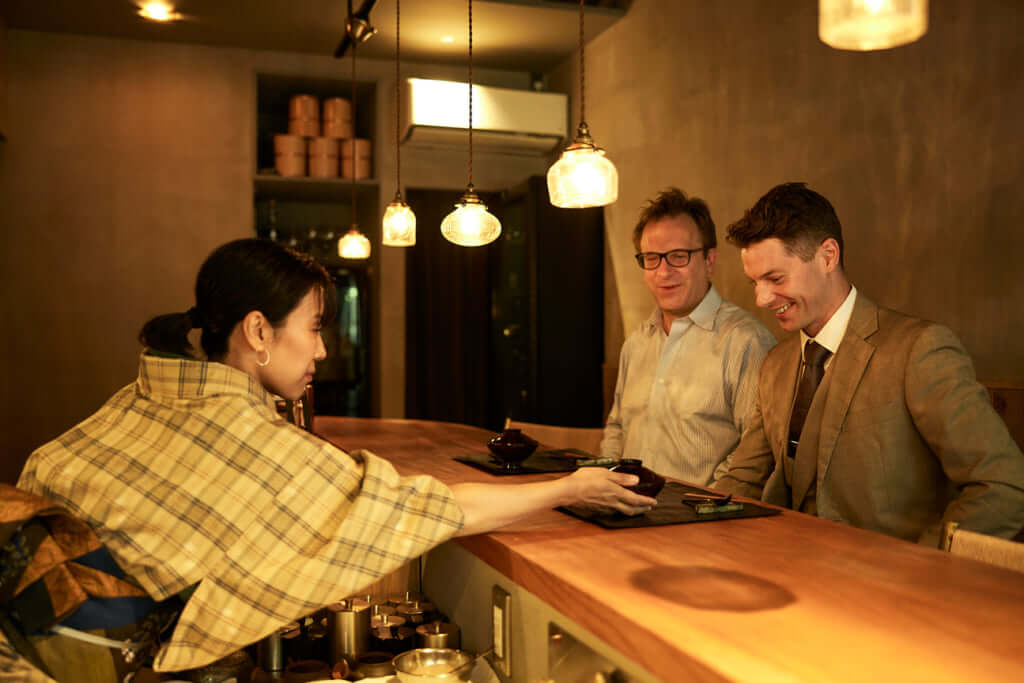
Chinatsu Nagamine of Ryoriya-Koryoriya is a pioneer of green tea and food pairing.
A cold-infused ‘sencha’ with a flavor reminiscent of melon
While Japanese tea, just like wine, tastes different depending on the variety of plant and the region it comes from, tea’s on-site brewing process adds another wrinkle of flavour complexity. Whenever you make a pot of green tea, you can change the parameters: the temperature of the water, the leaves-to-water ratio, and the steeping time. As Nagamine will show us, playing with these variables can radically change the tea’s taste.
For our pairing, Nagamine has devised a tasting arc that will move from light to heavy, progressing from fruit and vegetables through to shellfish, fish, and meat courses. In line with this, she launches us on our way with a dish of persimmon served with chrysanthemum greens and tofu with walnut sauce. This, she has paired with cold-brewed ‘Summer Breeze,’ a Sencha from Brekell’s own Senchaism tea selection, served in a champagne flute.
Brekell points out that Sencha is the easiest Japanese tea to pair. It goes well with both Japanese and Western sweet things—though perhaps not dark chocolate, which can overwhelm its delicate flavour. What Nagamine has done for us is to cold brew the tea to foreground the umami and sweetness typical of the Yamakai cultivar. ‘Yamakai also has a slightly melon-like flavour to it. This goes very well with the persimmon, because the tea itself is quite fruity,’ comments Brekell approvingly.
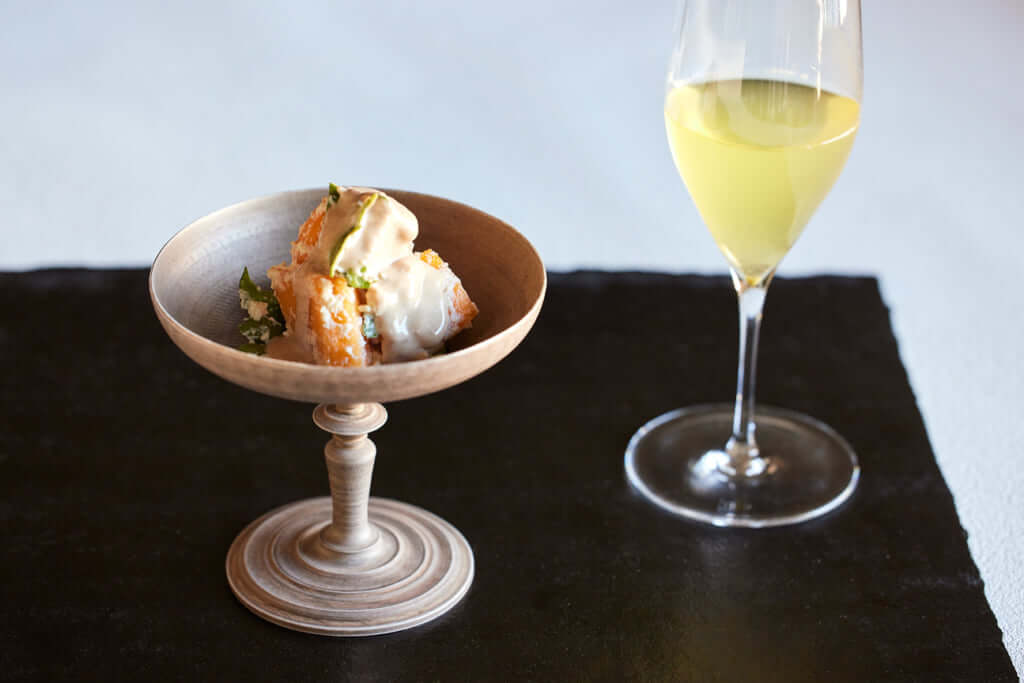
Persimmon with chrysanthemum greens and tofu served with walnut sauce paired with cold-brewed Yamakai ‘Sencha’ from Shizuoka.
Teas sometimes infused twice
Nagamine has paired the next dish—boiled daikon radish topped with four kinds of white miso—with a pan-fired Genmaicha. ‘Typically, you drink Genmaicha by itself, but because you have roasted rice grains in there, it goes well with roasted flavours,’ Brekell says. ‘It’s very soft on the palate and has umami too, so it will go well with miso which also has umami, a slightly roasted flavour.’
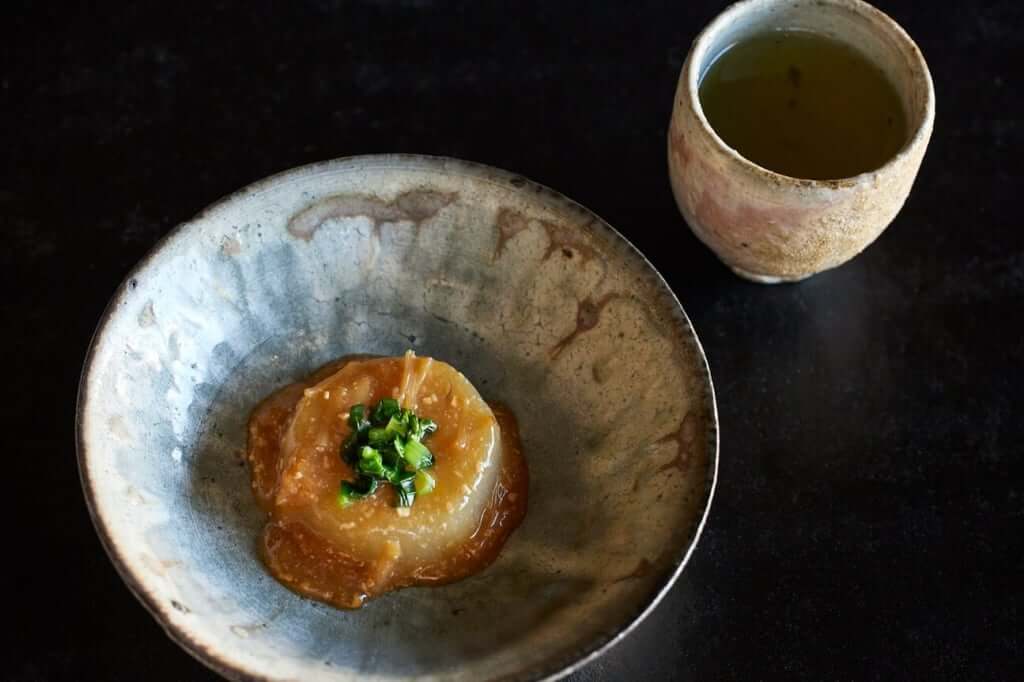
Boiled daikon topped with four kinds of white miso paired with hot Minoru Pan-fired ‘Genmaicha’ from Miyazaki in Kyushu. (Producer: Kadota Seicha)
Our third course is a sake-steamed oyster topped with seaweed which Nagamine has paired with a Gyokuro served in a tiny cup. Gyokuro is so strong that it can be difficult to pair, however its slightly savory, seaweed-like aroma means that it goes well with seafood, especially shellfish.
In this case, Nagamine has opted to use a second infusion, because the first infusion is so dense there’s a risk of it overwhelming, rather than amplifying the oyster’s flavour. ‘This is groundbreaking,’ Brekell comments admiringly. ‘In Japan the first infusion is considered the best, so serving the second is a courageous decision.’
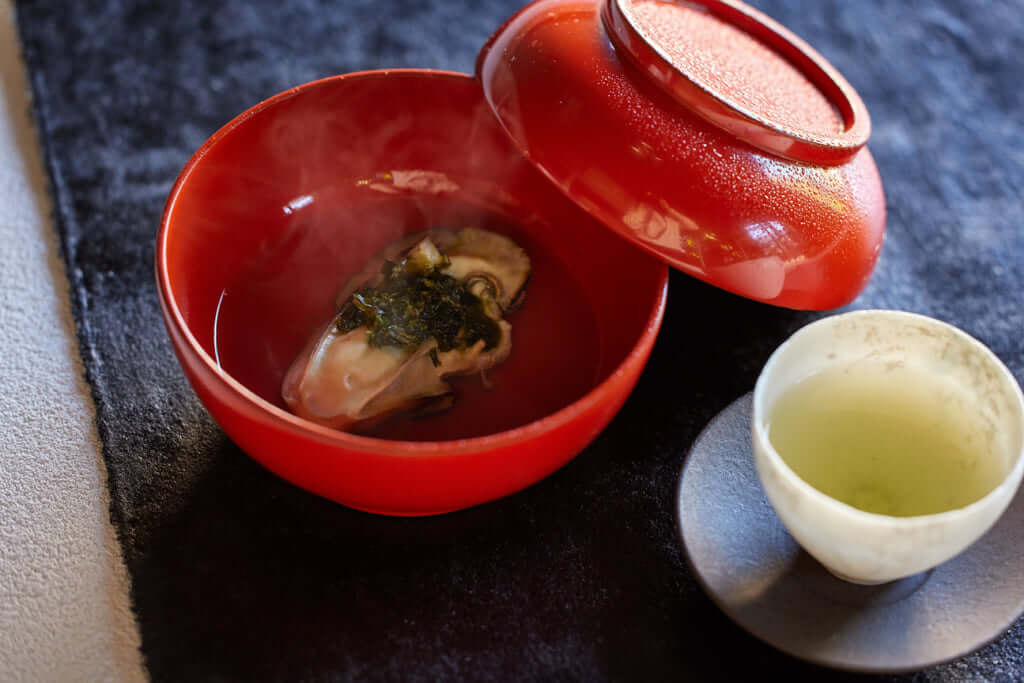
Sake-steamed oyster garnished with seaweed paired with a hot second-infusion of Meijin ‘Gyokuro’ from Kyoto. The rich ‘umami’ of the ‘Gyokuro’ amplifies the taste of the oyster. (Producer: Ujichasi Kanemata)
Our fourth course is particularly beautifully presented: a couple of Japanese smelt in light tempura batter seem to be flying across the plate, supported by their stiff little fins. The smelt are paired with a Matcha soda with a squeeze of lemon, served in an elegant long-stemmed wine glass.
‘The aim here is for the freshness and lightness of the soda bubbles to complement the lightbodiedness of the white fish, while lemon with fish is, of course a classic combination,’ Brekell says.
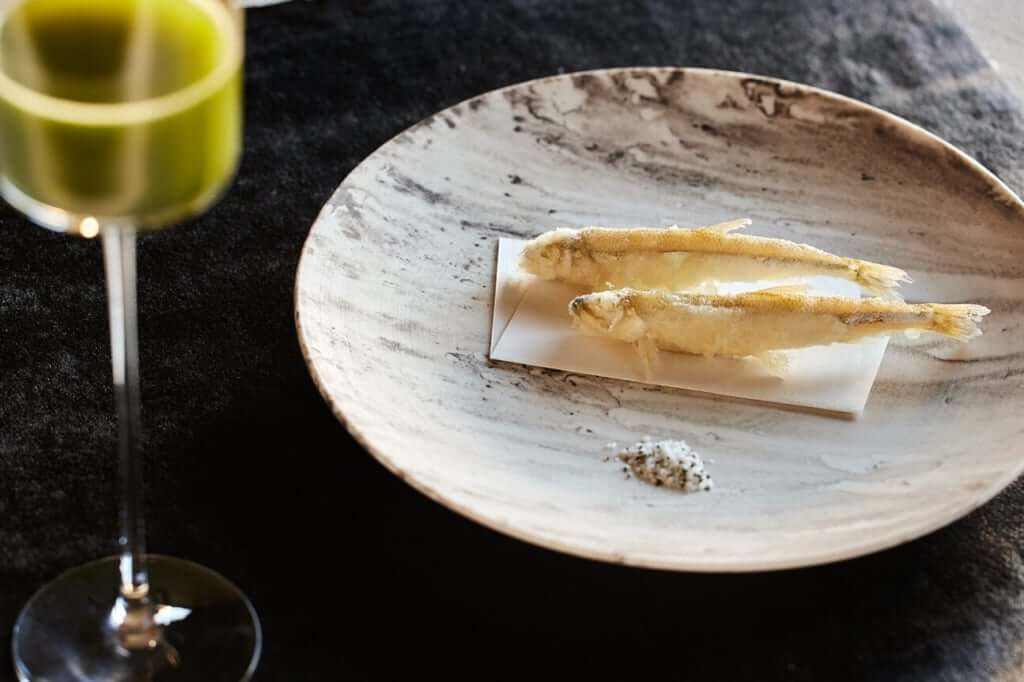
Tempura of Japanese smelt with ‘konbu’ salt paired with Saemidori Matcha soda with a squeeze of lemon. (Producer: Yamecha Kumaen)
Now we have reached the last—and richest—stage of our gourmet journey, a simmered duck stew with deep fried taro, Japanese parsley and wasabi, paired with a hot Hojicha. Yet again Brekell is impressed. ‘Meat is the most difficult thing to pair with tea, but this Hojicha has a borderline smoky taste, meaning it goes well with meat,’ he says.
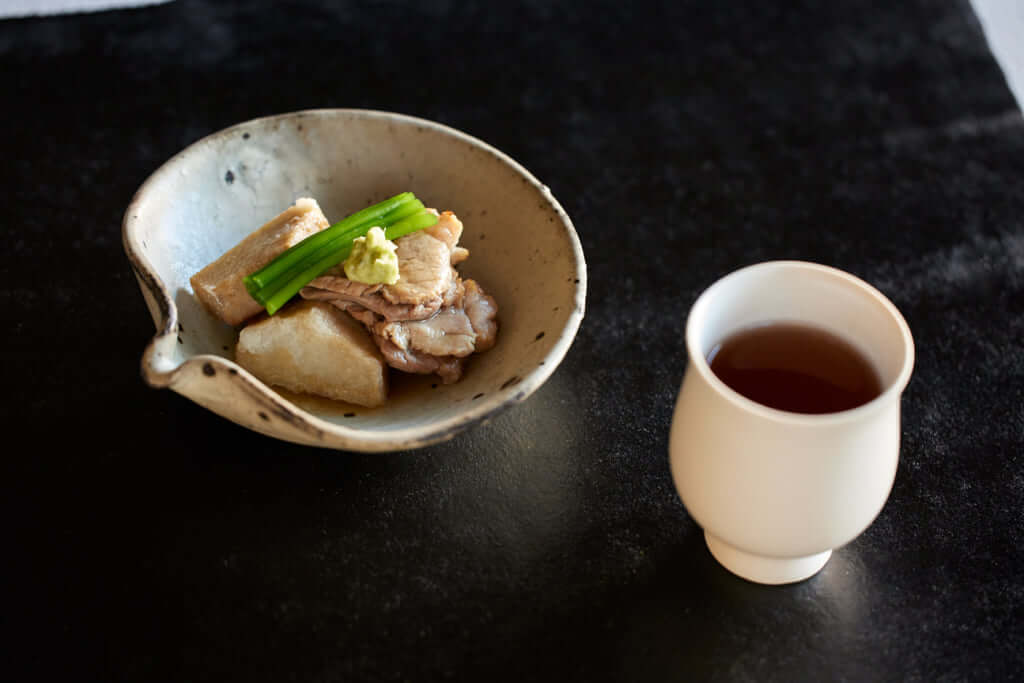
Simmered duck stew with deep fried taro, Japanese parsley and wasabi paired with hot Kasane ‘Hojicha’ from Saitama. (Producer: Okano-en)
Distinguishing between cultivars and infusion methods
Serious pairing enthusiasts who fancy following in our footsteps to Ryoriya-Koryoriya will be pleased to learn that the menu there provides abundant background detail, including the brewing style, the region, the cultivar and the producer’s name, enabling you to track down any tea that strikes your fancy. And there’s something else to look forward to: The restaurant’s standard pairing courses are even more generous than ours, with nine or eleven dishes, rather than five.
As a last word, Brekell shares a couple of modern tea house recommendations for those who prefer to stay on the classic ‘green tea and sweets’ track. IPPUKU&MATCHA in Tokyo’s Nihonbashi district makes French-inspired sweets using Matcha from Uji, the most famous Matcha-growing region, which can be paired with a range of high-quality Matcha teas. Meanwhile, at Higashiya, a tea house with branches in Tokyo’s Ginza and Marunouchi districts, as well as enjoying different teas with different Japanese tea sweets, you can also try Bancha, teas made according to old local recipes that predate the industrialisation of the business.
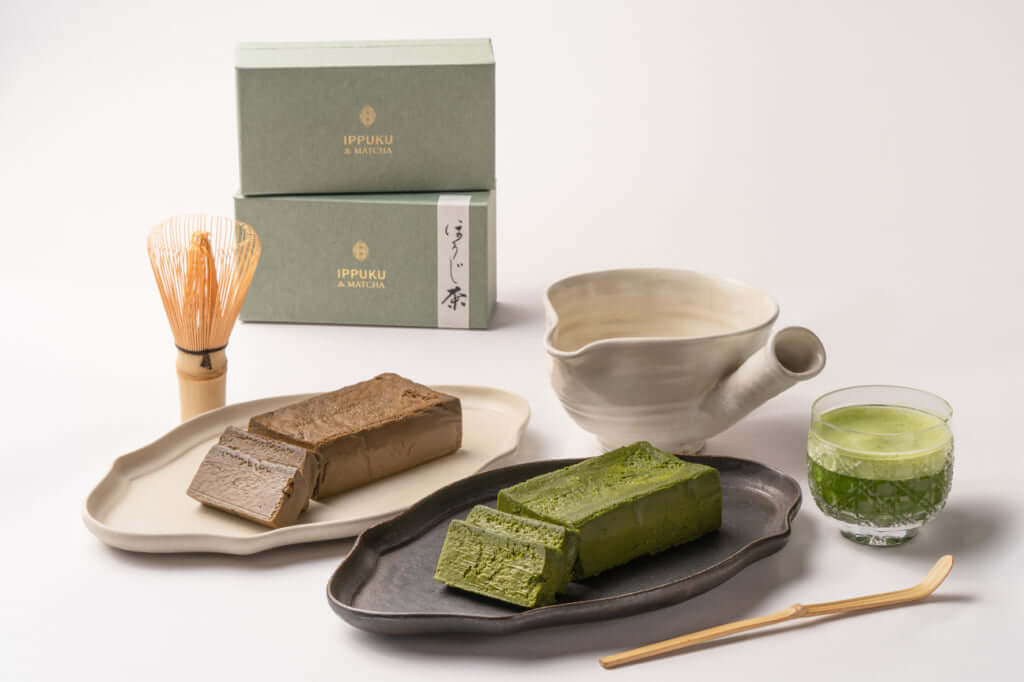
Uji Matcha and ‘Hojicha’ terrine assortment by IPPUKU&MATCHA.
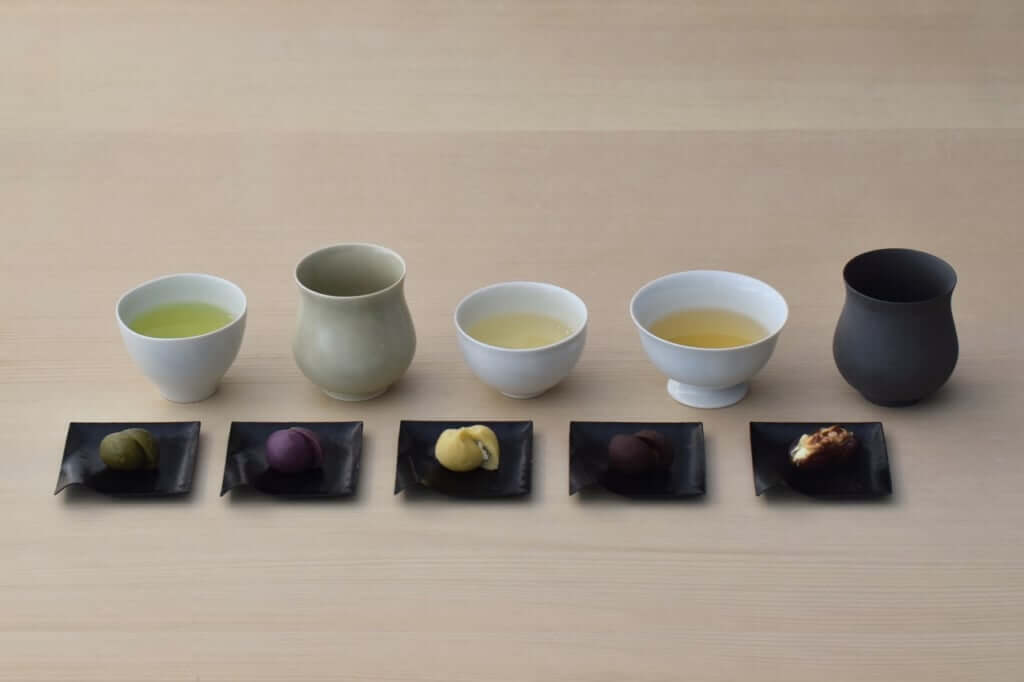
The tea pairing menu with Japanese sweets of Higashiya Ginza.
The pairings of food and teas offer a unique gustatory experience, whether classically combining green tea with sweets or exploring more modern and experimental pairings. Trying them out ensures discovering new facets of tea, particularly its Japanese varieties.

Enjoying a green tea-and-food pairing.
RECOMMENDED JAPANESE GREEN TEA AVAILABLE FOR PURCHASE OVERSEAS
ITO EN
The world’s premier green tea brand. Hojicha is carefully roasted at high temperature. This roasting process generates a toasty aroma, and smoky taste.
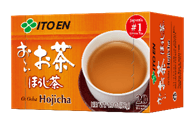
Aiya America, Inc.
Steeped in over eight hundred years of tradition, Aiya’s signature product, Ceremonial Matcha, has been produced in Nishio, Japan since 1888. Leaves are shade grown for approximately 30 days, which results in a deep green color, yielding a rich umami flavour. Only select leaves are handpicked during the harvest in April and once they are de-stemmed and de-veined, the leaves are ground into Matcha powder using artisan-made granite grinders.
The health benefits of Matcha cannot be underestimated; a powerhouse of antioxidants and a fraction of the amount of caffeine found in coffee. Aiya’s Ceremonial Matcha is Non-GMO Project Verified, Gluten Free Certified, and Kosher Certified. Over the past several years, Aiya’s products have made their way into retailers throughout the United States and Canada, introducing Matcha to a diverse and wide range of customers.
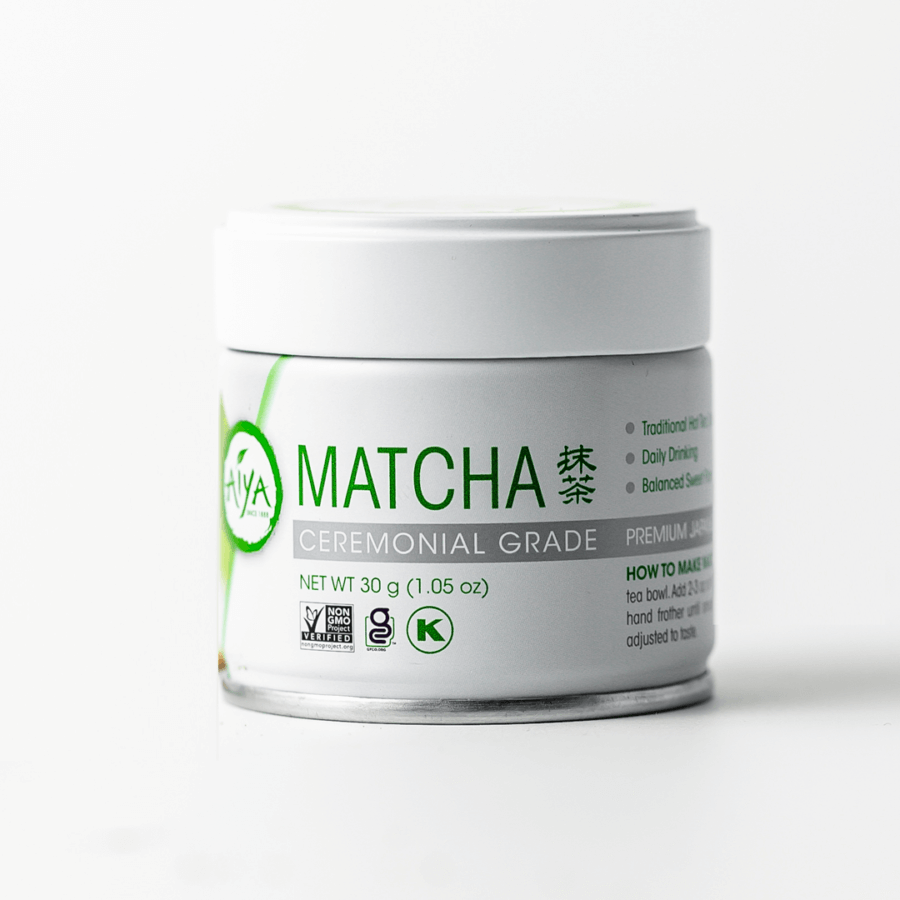
Yamasan Co., Ltd.
Japanese Organic Sencha Loose Tea
Tea experts carefully assess the quality of tea leaves every year. We mainly use the first harvest varieties of ‘Yabukita’ and ‘Saemidori’. Furthermore, far-infrared roasting and pasteurisation bring out the original impactful aroma of tea and the full flavour of the tea leaves.
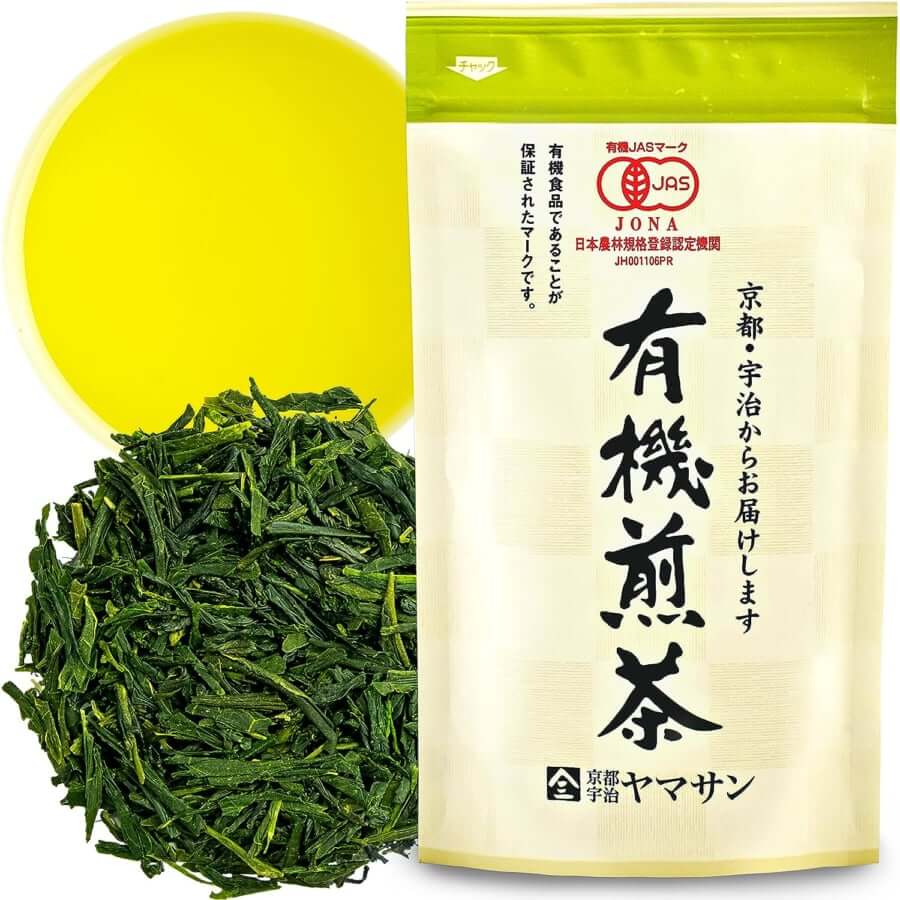
Ushijima Tea Manufacturing Co.
It is Yame Hon Gyokuro from the Gyokuro production area of Yame, which won the top prize in Japan in the Gyokuro category of the National Gyokuro Fair. Enjoy the rich, thick sweetness that only Gyokuro can offer. Ushijima Gyokuro is made by deep steaming, which is rare even in Yame.
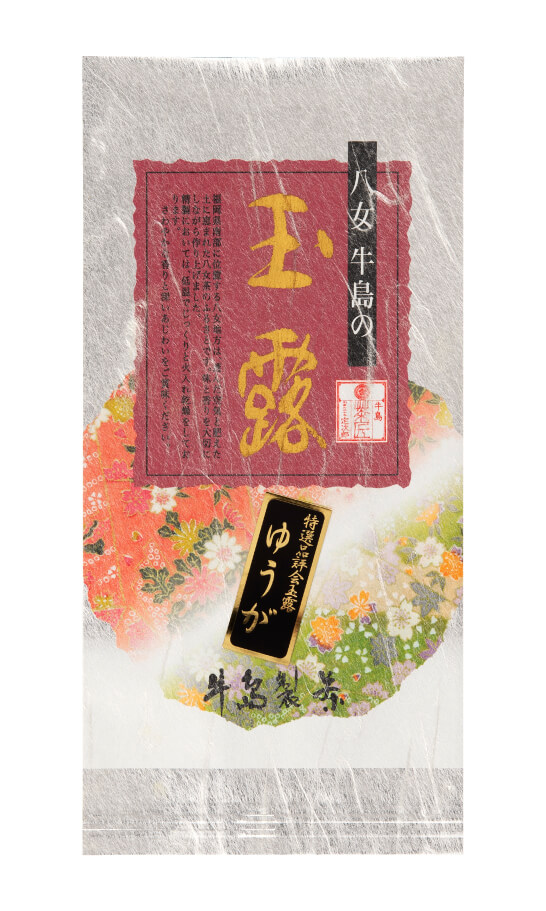
Sugimoto Tea Company
Sugimoto Reserve Mizuki Matcha
Mizuki Matcha is a true embodiment of excellence in the world of Japanese green tea. ‘Mizuki’ means celebration, happiness, fresh, and beautiful. It was chosen to represent a beautiful green tea field and perfectly describes this incredible ceremonial grade Matcha from Yame, Fukuoka.
Thick and creamy, this Matcha is intensely nutty in aroma and flavour, similar to fresh pine nuts. It’s rich in umami and has no astringency. When it’s gone, it leaves a lingering steamed milk finish.
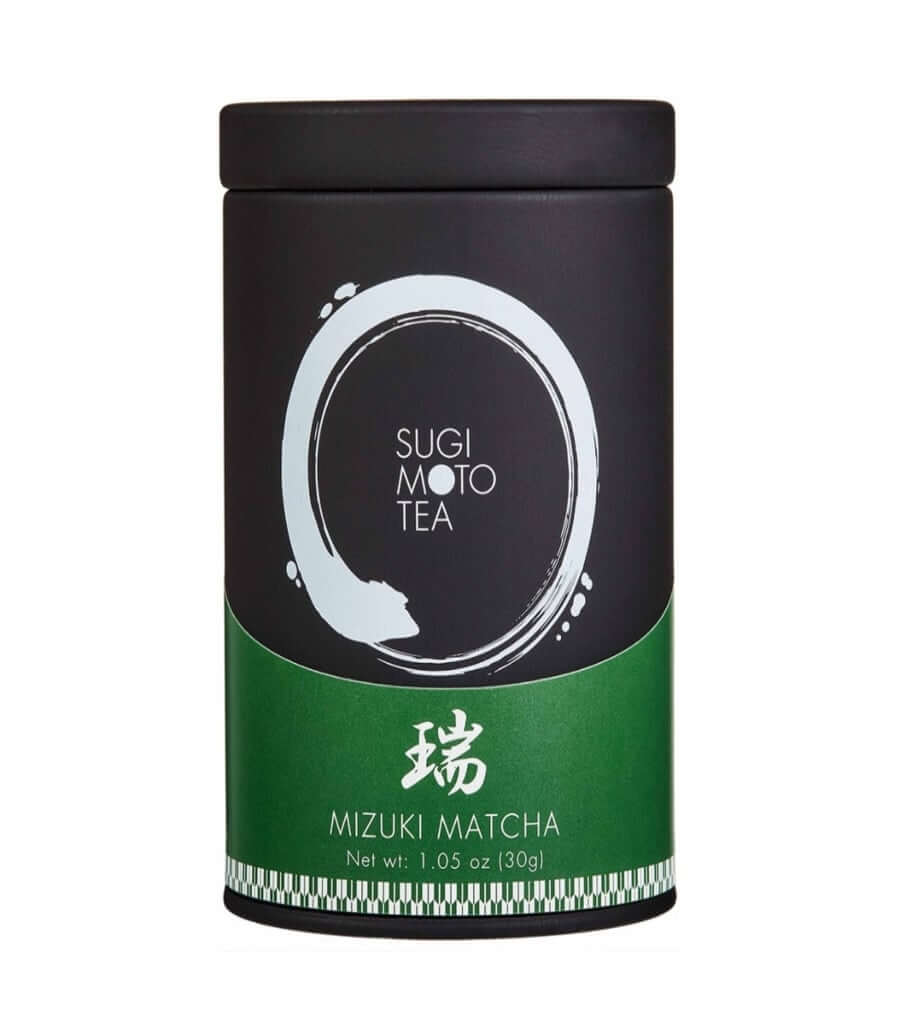
OSADA Seicha Co., Ltd.
OSADA’s OG Genmaicha contains expertly blended 50% organic green tea and 47% organic Japanese brown rice. Cultivated in Shizuoka, this tea undergoes medium steaming and 8-level roasting for a balanced umami flavor and low-key scent.
With a surprisingly low caffeine level, this tea offers a balance of flavor and aroma with just the right amount of brown rice. With an annual production of less than 5,000kg, this is an exceptional tea. The aromas of this brown rice are appreciated worldwide.
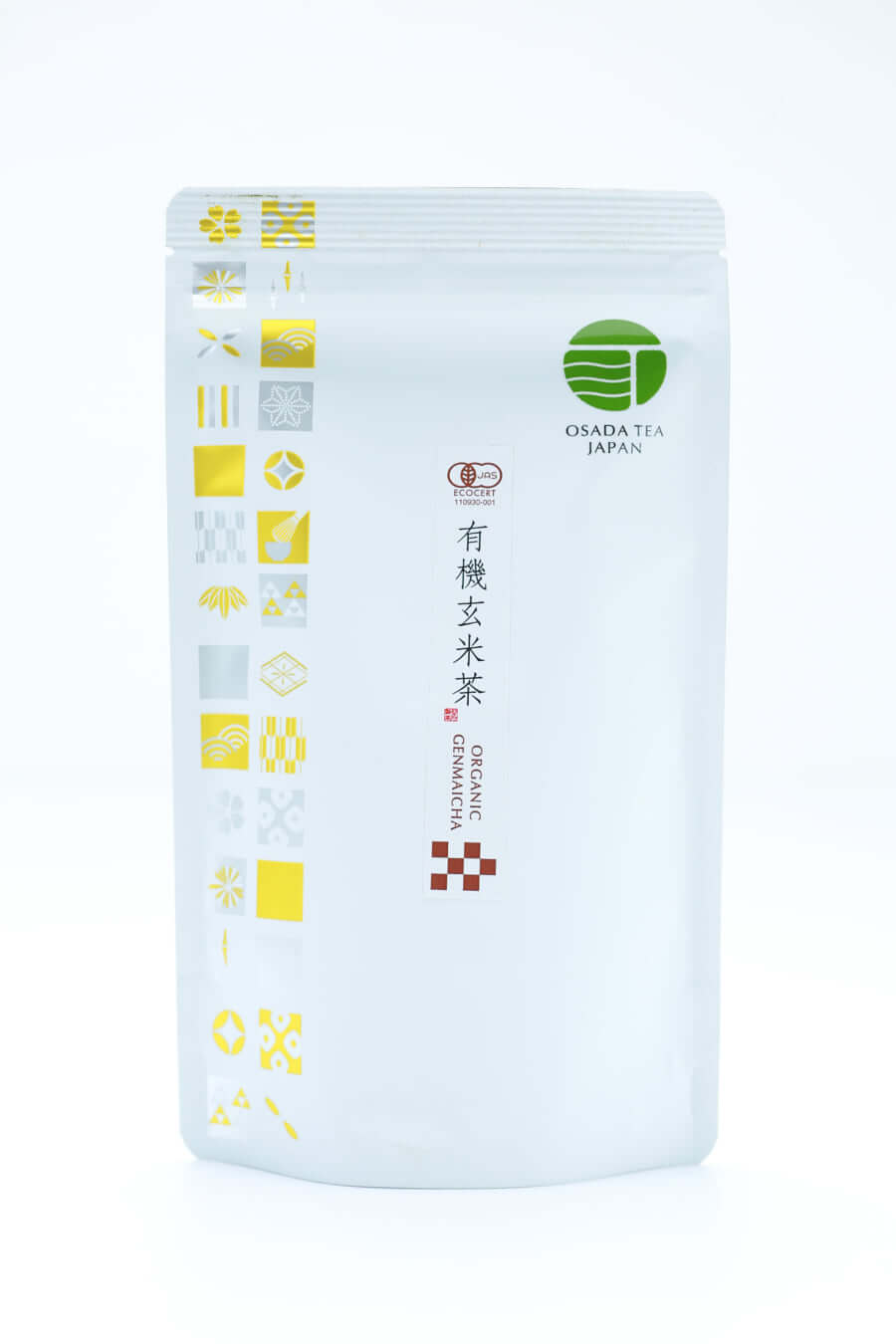
TRENDING
-
Ishiuchi Miyako, A Singular Perspective on Women
Recipient of the 2024 Women in Motion Award, the photographer creates intimate portraits of women through the objects they left behind.

-
Recipe for Ichiraku Ramen from ‘Naruto’ by Danielle Baghernejad
Taken from the popular manga with the character of the same name who loves ramen, this dish is named after the hero's favourite restaurant.

-
Namio Harukawa, Master of Japanese SM Art
'Garden of Domina' offers a dive into the world of an icon of ‘oshiri’, whose work has now reached a global audience.

-
The Tattoos that Marked the Criminals of the Edo Period
Traditional tattoos were strong signifiers; murderers had head tattoos, while theft might result in an arm tattoo.

-
The Emperor of Japanese Porn is Now the Star of a Netflix Series
Deliciously funny, The Naked Director especially succeeds in reviving the atmosphere that was so characteristic of 1980s Japan.





